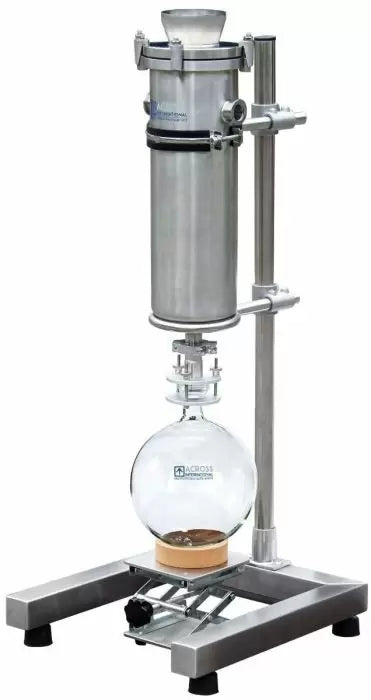Vacuum Cold traps condense vapors and prevent them from entering vacuum systems. U-shaped, Y-shaped, and specialty traps with borosilicate or quartz construction suit most laboratory needs. Consider temperature resistance, opacity, and joint sizes when selecting the right trap for your vacuum distillation, extraction, sublimation, or fractionation protocol. Quality cold traps protect vacuum pumps integrity while capturing target components. We also stock cold traps for dry ice, liquid nitrogen and oil. Our Cold traps also come in both glass and stainless steel options depending on your equipment requirement. Learn more about technical specs on each product page to find the best trap for your application.
How to Select the Right Cold Trap
With so many varieties and designs available, choosing the right cold trap can be daunting. We offer a range of cold traps that cater to different applications allowing you to pick the right one for your requirements. The following are factors to consider when selecting a cold trap:
- Gas flow rate: The cold trap's effectiveness depends on the gas flow rate through it. Ensure the device you choose matches your flow rate requirements.
- Size: Cold traps come in various sizes, and the choice will depend on the amount of material you want to condense.
- Compatibility: Ensure the cold trap you choose is compatible with the gases you intend to trap.
- Temperature control: Maintaining a constant temperature is crucial in cold traps. Our models come equipped with temperature control features to provide maximum efficiency.
Maintenance and Care of Your Cold Trap
Proper maintenance enhances the durability and performance of lab equipment. Here are tips on how to take care of your cold trap:
- Cleaning: Regular cleaning prevents contamination, reduces the likelihood of cross-contamination, and maintains optimal performance.
- Temperature control: Maintaining consistent temperatures guarantees consistent results. Clean the trap regularly to prevent blockages that result in uneven temperatures.
- Storing: If not in use, keep the cold trap in a dry place away from dust and other contaminants. Cover it with a clean cloth or plastic wrapping to protect it.
- Calibration: Regular calibration ensures accuracy in measurements, thus improving analytical results.
- Repairs: If you notice any damage or wear and tear, consult a trained technician to repair it. Do not attempt to fix it yourself as this could damage the equipment further.
By following these tips, you can ensure your cold trap retains its functionality and reliability, providing you with precise and accurate results for years to come.
With our innovative and skilled team at the helm, we are constantly seeking ways to elevate our products and services to new heights. This enduring commitment to progress ensures that you'll always receive the very best cold traps that the industry has to offer, leaving you with the confidence that you've made the right choice.






































